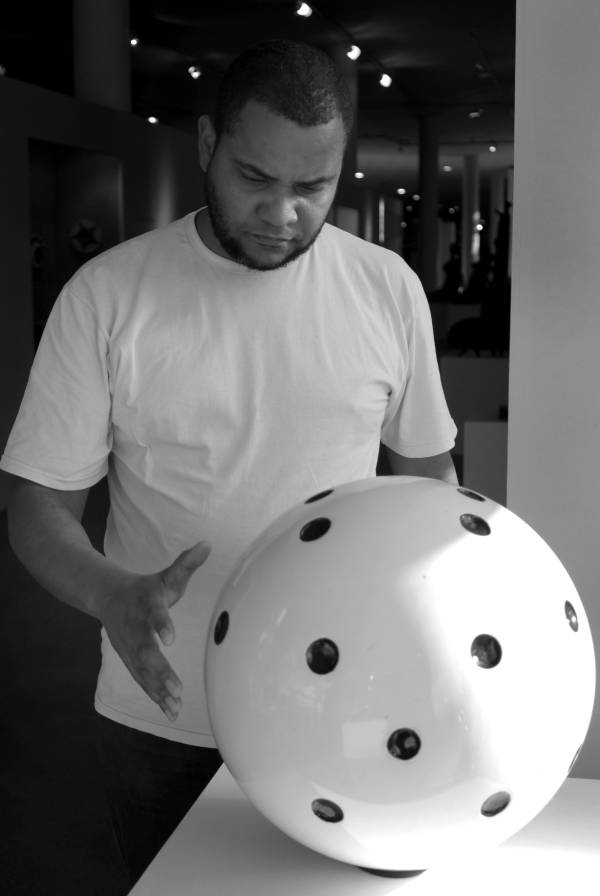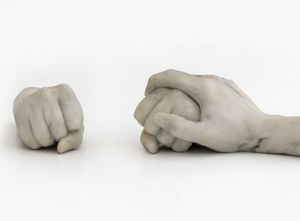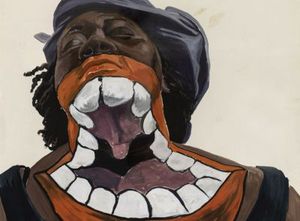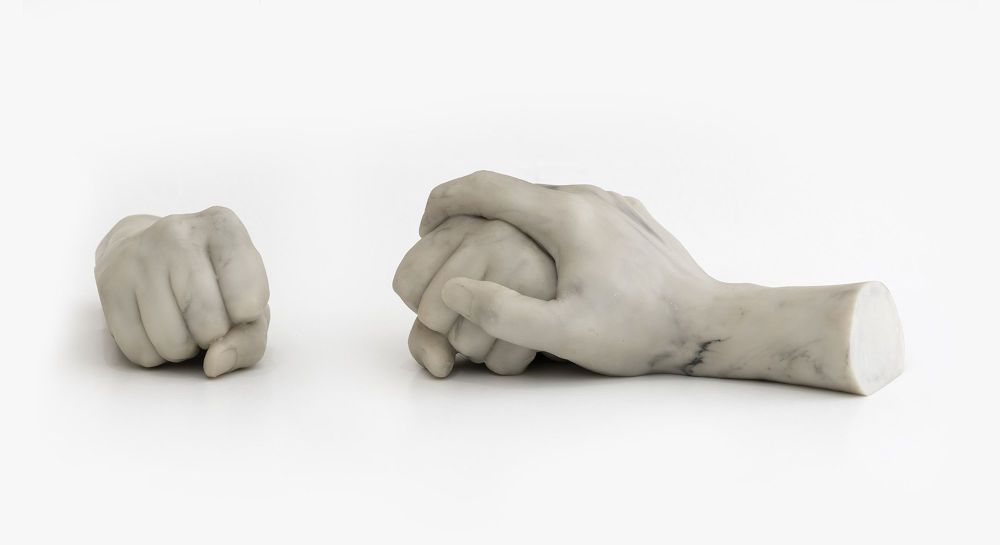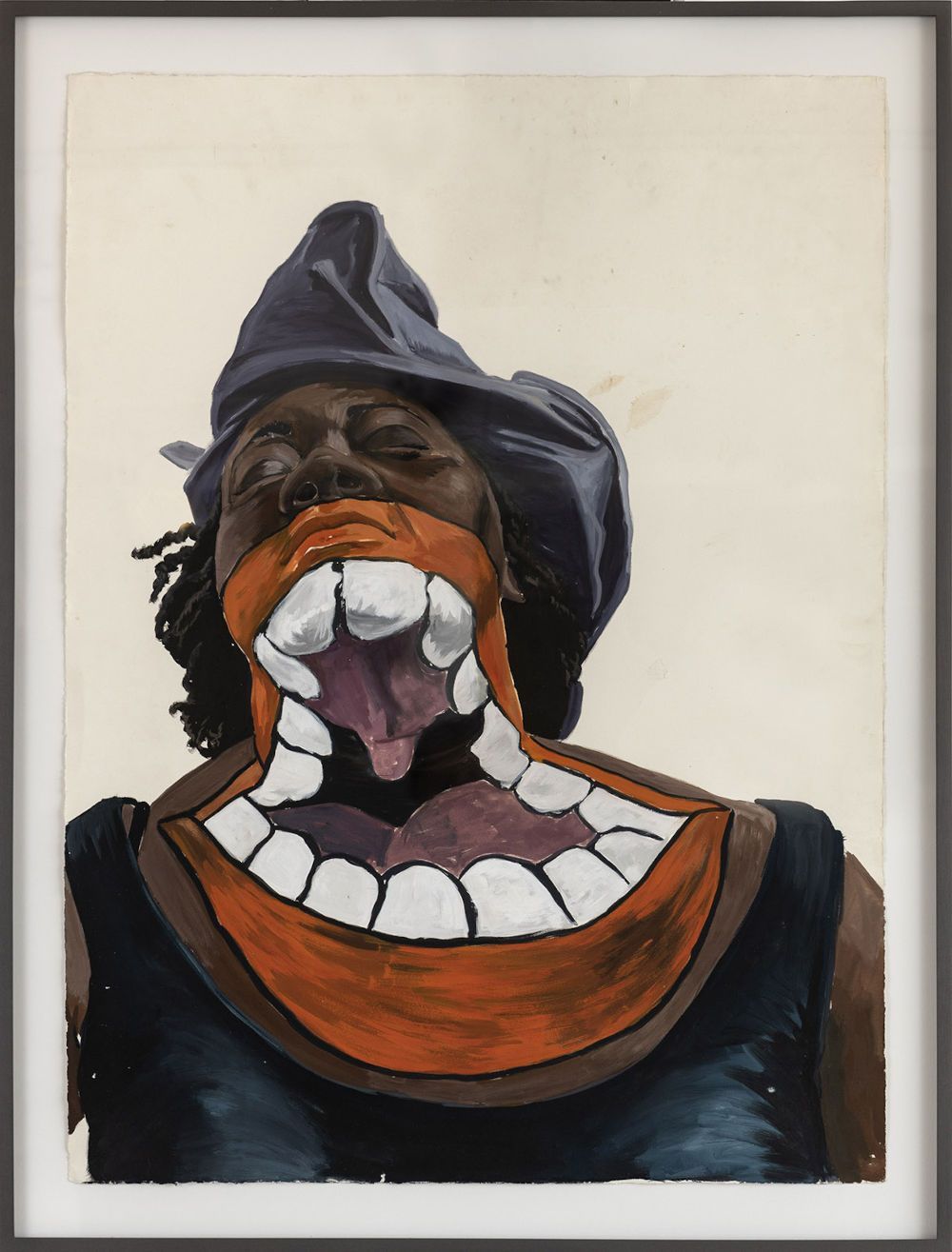Born in São Paulo in 1973, Sidney Amaral initially focused primarily on sculptures representing everyday objects forged in noble materials such as marble and bronze, displaced from their original contexts and poetically re-signified by opposing banality and delicacy, simplicity and nobility, ephemerality and permanence. The series Balões em Suspensão (Suspended Balloons), 2009, for example, creates tensions between the lightness of the figures and the weight of the material, between the delicate polishing of the balloon's surfaces and the coarse chainsaw chain that sustains them.
The thematic universe of Amaral’s pictorial work is almost diametrically opposed to this poetic lightness, diving into a harsh and raw reality and dealing with social, historical, and political issues that concern the place of Black people in Brazilian society. These are realistic drawings, acrylics, and watercolors in which he reveals extreme technical mastery in the use of chromatic compositions, lines, volume and lighting.
Self-representation is constant in Sidney Amaral's work. By making himself the center of many of his paintings and watercolors, he not only attests to his experience as an individual but brings to light his identity as a Black man, father, husband and public school teacher, dealing with the privations and anxieties of a historically marginalized group which to this day is the target of prejudice and oppression in Brazil. “I always see my work as a mirror that, when looked at for a long time, reminds us of these metamorphoses of the world, of my wanting to be in the world and find this place of mine. I am a being who is out of place all the time”, says Amaral. By choosing to place his own image – the image of his body – as the field in which these issues are tensioned and rubbed against, he unveils the weight that history – and whatever is historically constructed – exerts on individuals in their daily lives.
The dialogue of his work with the history of Brazil and the constructions of the image of Black people in this context is also evident in the choice of lithography and watercolor as his main techniques, as well as in the pictorial realism of his lines. These materials and characteristics refer to the visual records that revealed the life and conditions of enslaved people made by traveling artists such as Eckhout (1610 – 1665) and Debret (1768 – 1848) in Brazil. Amaral updates that iconography by placing himself, as a Black man, in the place of the observer and the observed, now giving voice to the oppressed subject. Reference to these historical records appears, for example, in the watercolor Gargalheira, Quem Fala por Nós? (Gargalheira, Who Speaks for Us?) (2014), in which the Gargalheira, an instrument of torture during slavery in Brazil, merges and adapts to the mediatized social oppression of the present day. The image, strong and powerful, deals at the same time with the invisibility and overexposure of the Black man who, even though he is surrounded and violently tied to the microphones, assumes a haughty silence of denial of the system. Amaral’s work recalls and denounces the recent and still oppressive developments of Brazil’s slavery period and the wounds that it opened in the constitution of Black identity in the country.
Sidney Amaral died in May 2017, aged 44. Despite the strength and notoriety of his work, he was never able to support himself financially with his production alone; he taught arts education in a public school. “Being an artist I think is already difficult, being a Black artist in Brazil is even a little more complicated”, he declared in an interview on the Nobrasil website.
His work still resists, urging us to think about Brazil and its ills. In a culture in which, in recent historical times, the Black man was represented only as a labor force, subjected and humiliated as an enslaved person and, later, in a folkloric or pejorative way, a production like Sidney do Amaral’s, which portrays Black people as individuals mobilized against an oppressive determination, is fundamental to understanding and revising Brazil´s recent history.
Amaral graduated in Fine Arts from the Armando Álvares Penteado Foundation (FAAP) in 1998. He also studied academic painting and photography at the Museu Brasileiro da Escultura (Brazilian Museum of Sculpture), where he was a student of Ana Maria Tavares. He has participated in exhibitions at the Bienal de Valencia (2007), at the Museu de Arte Moderna da Bahia, during the 30th anniversary of Itaú Cultural, as well as other collective and individual shows at the Museu Afro Brasil, MASP and Instituto Tomie Ohtake. His work is featured in important public collections, including the Museu Afro Brasil, in São Paulo; Museu de Arte Moderna de São Paulo – MAM SP; and Museu de Arte Contemporânea da USP – MAC USP.
